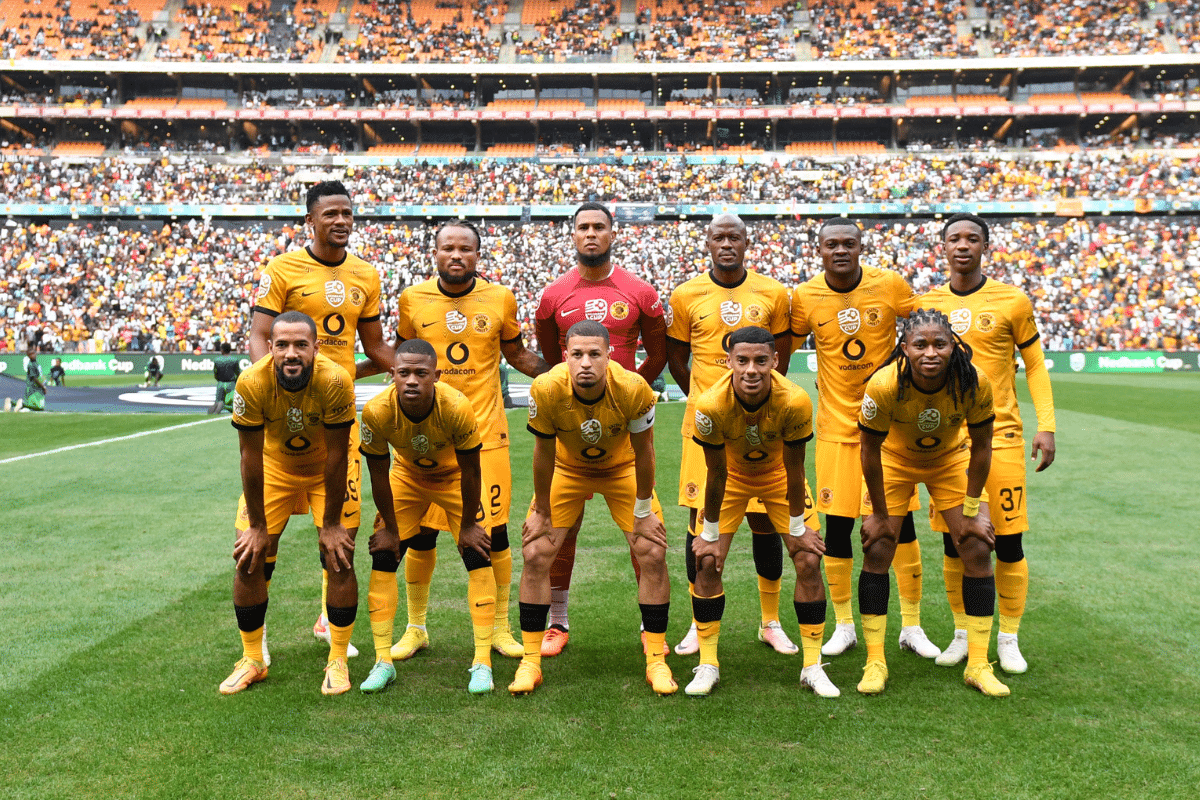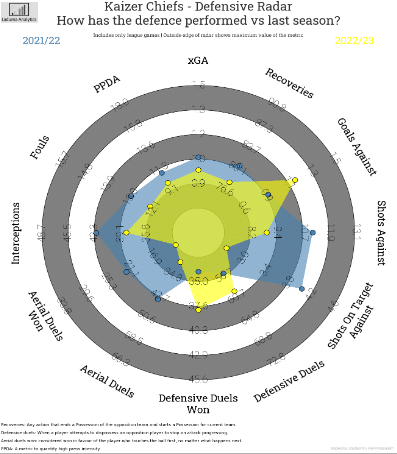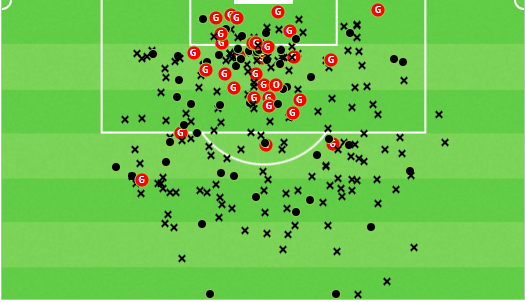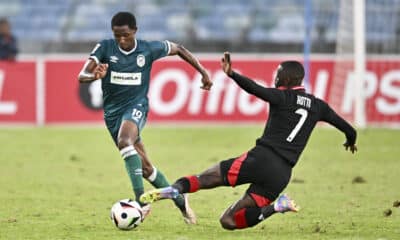
Kaizer Chiefs embarked on the 2022/23 DSTV Premiership season with high hopes and aspirations.
After a rather challenging 2021/22 campaign, along with a big clearout of mostly experienced players there was a sense of optimism with Arthur Zwane getting the job full-time. Off-field there were also changes with the board investing heavily in new software and staff to build a team with purpose. After all, the club had to make amends for a 5th place finish the previous campaign. So how did it go?
Fast-forward 8/9 months towards the end of the current season and the club as well as their loyal supporters would consider the campaign a disappointment. There has been a lot to unpack which we covered in the previous edition
that looked at their attack, this time around we look at the defence
The club made several key signings during both transfer windows, bolstering their squad with additions. The arrival of skilled players injected a fresh impetus into the team and provided increased competition for places. Most of the additions were of an attacking nature and in one sense that has paid off – it was at the back that the team has struggled.

Straight off the bat, we can see that on a per game level, the team conceded more goals than last season. All that despite their expected goals against (xGA) being lower than last season but still averaging a goal a game which equates to the total on the log. The interesting aspect to consider is the performance of conceding despite them conceding less shots on average per game than the season before. What drove this phenomenon?
For one, the rotation of goalkeepers and would have played a part. Chiefs used three goalkeepers during the season: Brandon Petersen, veteran goalkeeper Itumeleng Khune and Bruce Bvuma. Of the three Petersen conceded (39%), Khune (39%) and Bvuma (22%) of the team goals. Despite conceding the same amount of goals, Petersen faced approximately 30 shots more than Khune.
Another aspect being that 57% of the shots conceded came from inside the penalty area which helps to contextualise their high xGA (on average per game). This can also be shown by the sheer number of goals that were conceded from within the area.
Have the numbers improved? Yes. And No. There are some stats that have improved at Chiefs. And there are others that have gotten worse. The better question is – have the stats that matter improved, and are the improvements predictive of a brighter future. In other words, will they take Chiefs closer to becoming a 60-point team? The Coach may be basing his assertion on stats that show the process is working, but the league doesn’t hand out titles for the best process. Chiefs have had the highest and 2nd highest xG for a few years now, but the struggle to finish off what has been created remains – high xG has not translated to more goals. At some point, that becomes a worry. No team can win the title averaging one goal a game. Indeed, management may keep faith in processes, but that faith is going to be sorely tested in his second season.

As the DSTV Premiership season comes to a close this weekend, Chiefs can only manage another 47 point season at the very least – matching the points haul from the previous campaign. Their inconsistent performances this season have already led the club to act for the off-season and look to fix their leaky defence.
Chiefs have been busy on the market bringing in highly rated defensive players such as SuperSport United youngster, Thatayaone Ditlhokwe and TS Galaxy player, Given Msimango. Both new signings come from teams who have been defensively solid this season – conceding 21 and 20 goals in 29 games this season.
There will likely be more additions as well as some exits as the club also looks to balance the squad age and depth to try and play catch-up to their rivals at the top of the log.
























